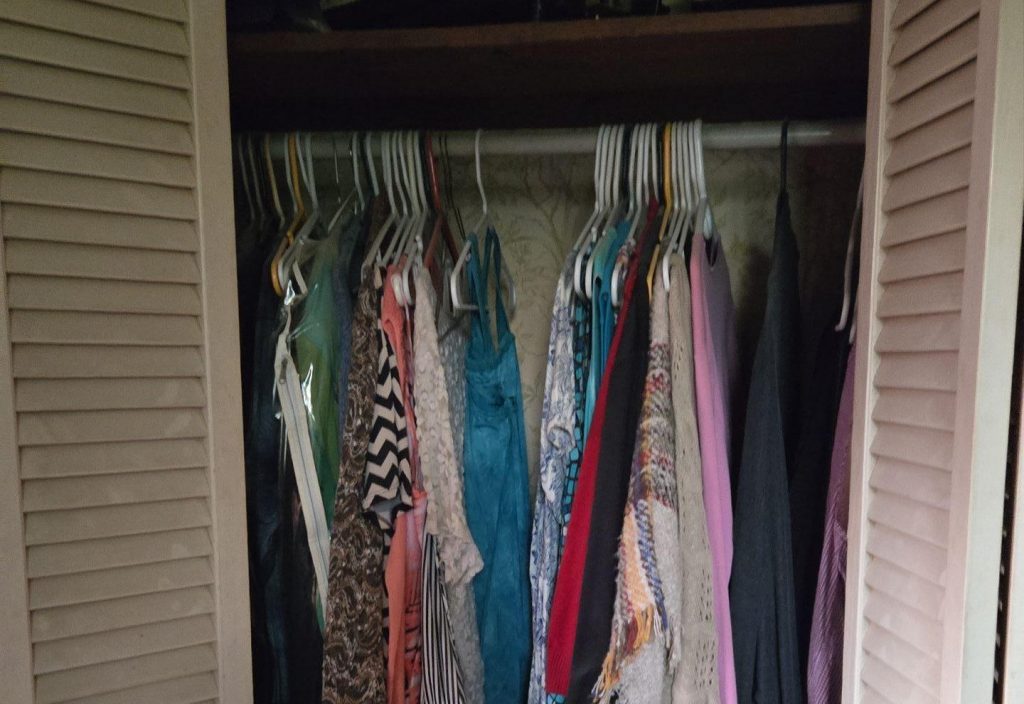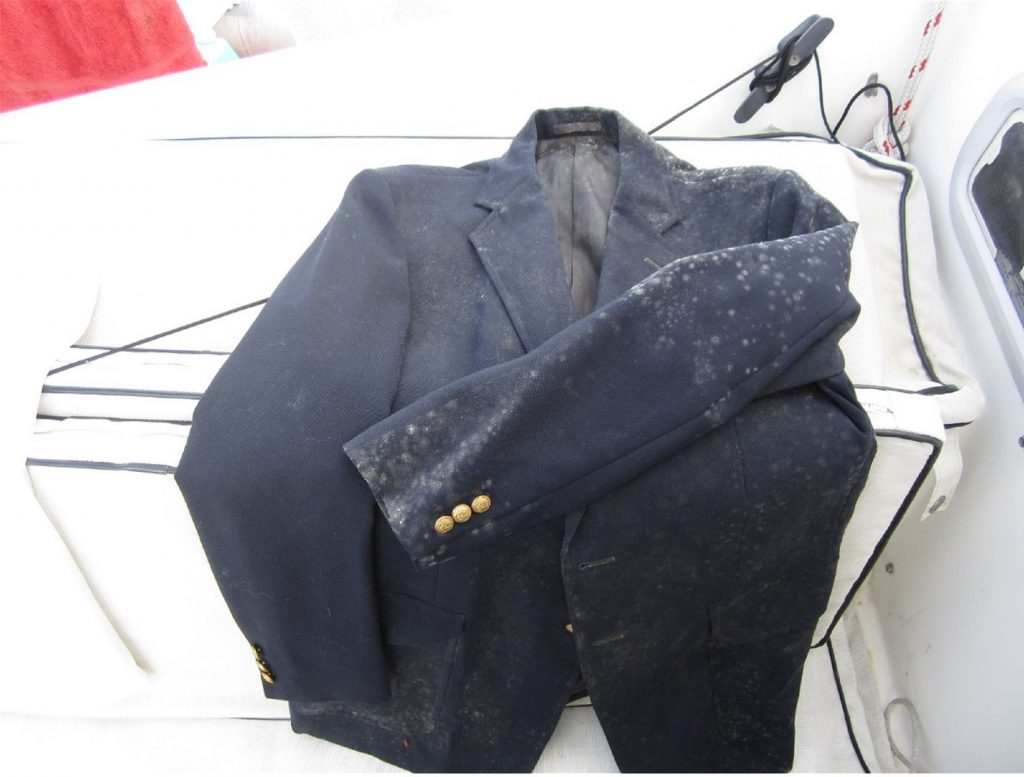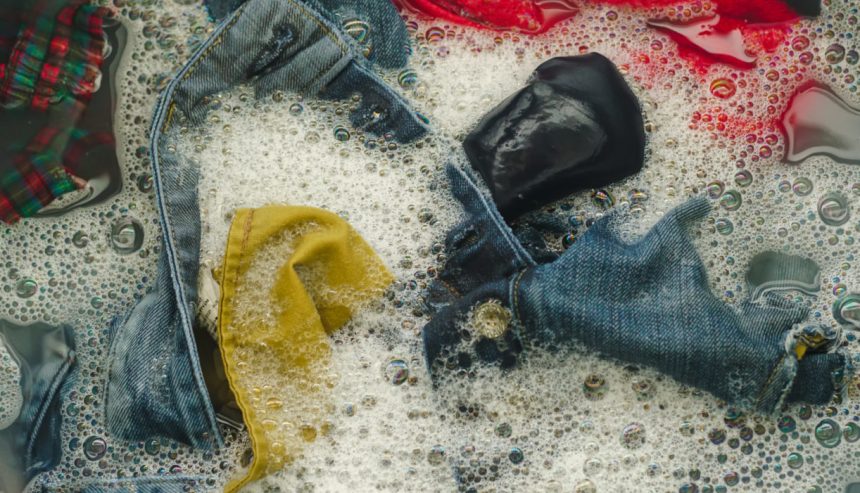That moment of discovery is utterly heartbreaking. You’re finally sorting through the aftermath of last week’s storm that flooded your Gallatin basement, and you pull open your laundry bin to find your favorite sweater speckled with fuzzy black spots and smelling like a damp cellar. Your stomach drops as you realize mold has claimed another victim.
But don’t toss those precious items in the trash just yet. As your local mold remediation experts serving Hendersonville and Gallatin, we’ve helped countless families salvage cherished clothing after water damage. Learning how to get mold out of clothes properly can save your favorite garments and protect your health from harmful mold exposure.
Table of Contents

Why Mold Loves Your Tennessee Wardrobe
Middle Tennessee’s humid climate creates the perfect breeding ground for mold, especially after flooding or plumbing leaks. Mold spores are always present in the air, but they spring to life when they land on damp fabrics in dark spaces like closets, basements, or laundry rooms.
Many Gallatin homeowners make the critical mistake of throwing moldy clothes directly into the washing machine. This can actually spread mold spores to other garments and embed them deeper into fabrics. The right approach involves careful handling, targeted treatments, and knowing when to call professionals.
Safety First: Protecting Yourself During Mold Cleanup
Before we dive into cleaning methods, your safety comes first. Mold exposure can cause allergic reactions, respiratory issues, and other health concerns.
Essential Safety Gear:
- N-95 respirator mask or better
- Rubber gloves (nitrile preferred)
- Protective goggles
- Old clothing that can be washed in hot water
Safe Work Practices:
- Work in a well-ventilated area, preferably outdoors
- Seal moldy clothes in plastic bags before transporting
- Change your clothing immediately after handling moldy items
- Shower thoroughly after cleanup sessions
Local Insight: “We’ve seen too many Hendersonville residents develop respiratory issues after attempting mold cleanup without proper protection. That musty smell coming from your flooded basement isn’t just unpleasant—it’s a sign you’re inhaling mold spores.”

Your Step-by-Step Guide: How to Get Mold Out of Clothes Effectively
Stage 1: Assessment and Sorting
Not all moldy clothes can be saved, and some require specialized cleaning methods.
Start by sorting into three piles:
- Salvageable: Light mold spotting, non-porous fabrics (synthetics, denim), items with sentimental value
- Questionable: Heavy mold growth, delicate fabrics, leather items
- Unsalvageable: Permanently stained, structurally damaged, or items that have been wet for over 48 hours
When to Immediately Discard:
- Items with extensive mold growth throughout
- Clothing that has been submerged in floodwater (which may contain contaminants)
- Porous materials like felt or heavily padded items
- Children’s clothing with heavy mold contamination
Stage 2: Preliminary Treatment Methods
Brushing Method (Outdoors Only):
- Take clothes outside to prevent spreading spores indoors
- Use a soft-bristled brush to gently remove surface mold
- Brush in one direction away from your body
- Wear your protective gear during this process
Sunlight Treatment:
- Hang clothes in direct sunlight for several hours
- UV rays naturally kill mold spores
- This works particularly well for white fabrics
- Rotate items to expose all sides to sunlight

Stage 3: Choosing Your Cleaning Solution
Different fabrics and mold situations require different approaches. Always test a small, hidden area first.
For White and Colorfast Fabrics:
- White vinegar solution: 1 cup of vinegar to 1 gallon of hot water
- Baking soda paste: Mix with water to form a thick paste, and apply to stains
- Hydrogen peroxide: 3% solution directly on stains (avoid on dark colors)
- Borax solution: ½ cup borax dissolved in 2 cups of hot water, then added to the wash
For Delicate or Colored Fabrics:
- Mild detergent with warm water
- Tea tree oil solution: 2 teaspoons tea tree oil to 2 cups water
- Grapefruit seed extract: 20 drops to 2 cups of water
For Heavy Mold Infestation:
- Commercial mold cleaners specifically designed for fabrics
- Oxygen bleach (never chlorine bleach on mold)
Stage 4: Washing and Rinsing Techniques
Pre-soaking is Crucial:
- Submerge clothes in your chosen cleaning solution for at least 8 hours
- Agitate occasionally to ensure penetration
- Use a five-gallon bucket for smaller items
Washing Machine Settings:
- Use the hottest water safe for the fabric
- Add your cleaning solution to the wash cycle
- Use an extra rinse cycle to remove all residue
- Add vinegar to the rinse cycle to neutralize odors
Drying Methods:
- Sun drying is ideal for final mold spore elimination
- Machine dry only if you’re certain all mold is gone
- Avoid hanging damp clothes in dark closets

When Home Remedies Aren’t Enough: Recognizing Professional-Grade Mold Problems
Sometimes, no matter how perfect your technique, household methods simply can’t handle severe mold contamination. Here’s how to know when you need professional help:
Call Professionals When You Notice:
- Mold returns quickly after cleaning
- You experience allergic reactions during cleaning
- The musty smell persists after multiple washes
- You’re dealing with valuable or sentimental items
- Multiple family members’ clothing is affected
- You discover mold in other areas of your home
Beyond Clothing: Addressing the Source
Successfully learning how to get mold out of clothes is only half the battle. If you don’t address the source of moisture, mold will keep coming back.
Common Mold Sources in Gallatin Homes:
- Basement flooding from heavy rains
- Plumbing leaks behind walls or under floors
- Poor ventilation in bathrooms and laundry rooms
- High humidity levels in closets and storage areas
- Previous water damage that wasn’t properly dried
“Our team often finds that clothing mold in Hendersonville and Gallatin homes is just the visible tip of the iceberg. When we’re called for mold removal, Hendersonville homeowners typically need. We usually discover larger hidden mold problems in walls, under floors, or in HVAC systems.”

The PuroClean of Hendersonville Difference: Why Local Expertise Matters
As your Middle Tennessee neighbors, we understand the unique challenges our climate presents. The humidity that makes our springs so beautiful also creates perfect conditions for mold growth after water incidents.
Our Comprehensive Mold Services Include:
- Professional assessment of mold contamination levels
- Advanced drying techniques to prevent future growth
- HEPA filtration systems to capture airborne spores
- Content cleaning and restoration for salvageable items
- Preventive treatments to protect against recurrence
“We’ve helped families throughout Gallatin, Goodlettsville, and Hendersonville salvage everything from wedding dresses to children’s favorite blankets. The joy of returning a supposedly ruined treasure is why we do this work.”
Don’t Let Mold Claim Your Favorite Clothes
Seeing mold on your clothing can feel discouraging, but in many cases, prompt and proper action can save your garments. The key is acting quickly, using the right methods for each fabric type, and knowing when to call for professional backup.
Frequently Asked Questions: Moldy Clothing Concerns
Can moldy clothes make you sick?
Yes, moldy clothes can cause allergic reactions, respiratory issues, skin irritation, and other health problems—especially for people with asthma, immune issues, or mold allergies. Always wear protection when handling moldy fabrics.
I got the mold out, but the musty smell remains. How do I get the musty smell out of sweaters?
For persistent odors, try soaking in a vinegar solution (1 part vinegar to 4 parts water) for several hours, then wash with baking soda added to the detergent. For delicate sweaters, sealing them in a bag with activated charcoal or coffee grounds for 24 hours can absorb odors without washing.
Is it safe to wear clothes that had mold but were cleaned?
If you’ve eliminated visible mold, stains, and odors, and the clothing has been thoroughly dried, it should be safe. However, people with severe mold allergies may want to discard previously moldy items.
How do I prevent mold from growing on clothes stored in my Hendersonville basement?
Use plastic storage bins instead of cardboard, include moisture-absorbing products like DampRid, ensure good air circulation, avoid storing clothes directly against concrete walls, and consider a dehumidifier for basement spaces.
Can dry cleaning remove mold from clothes?
Yes, but you must inform the dry cleaner about the mold beforehand so they can take proper precautions. Some delicate fabrics may be better suited to professional dry cleaning than home treatments.

When Mold Wins the Battle, We Can Help You Win the War
If you’ve tried these methods and still see mold returning, or if the contamination is too extensive for DIY approaches, don’t despair. Some mold situations require professional equipment and expertise.
Call PuroClean of Hendersonville today at (615) 348-7200 for professional mold assessment and remediation. We serve homeowners throughout Gallatin, Hendersonville, Goodlettsville, and all surrounding Middle Tennessee communities. Don’t let mold claim your cherished clothing—let us help you restore what matters most.



